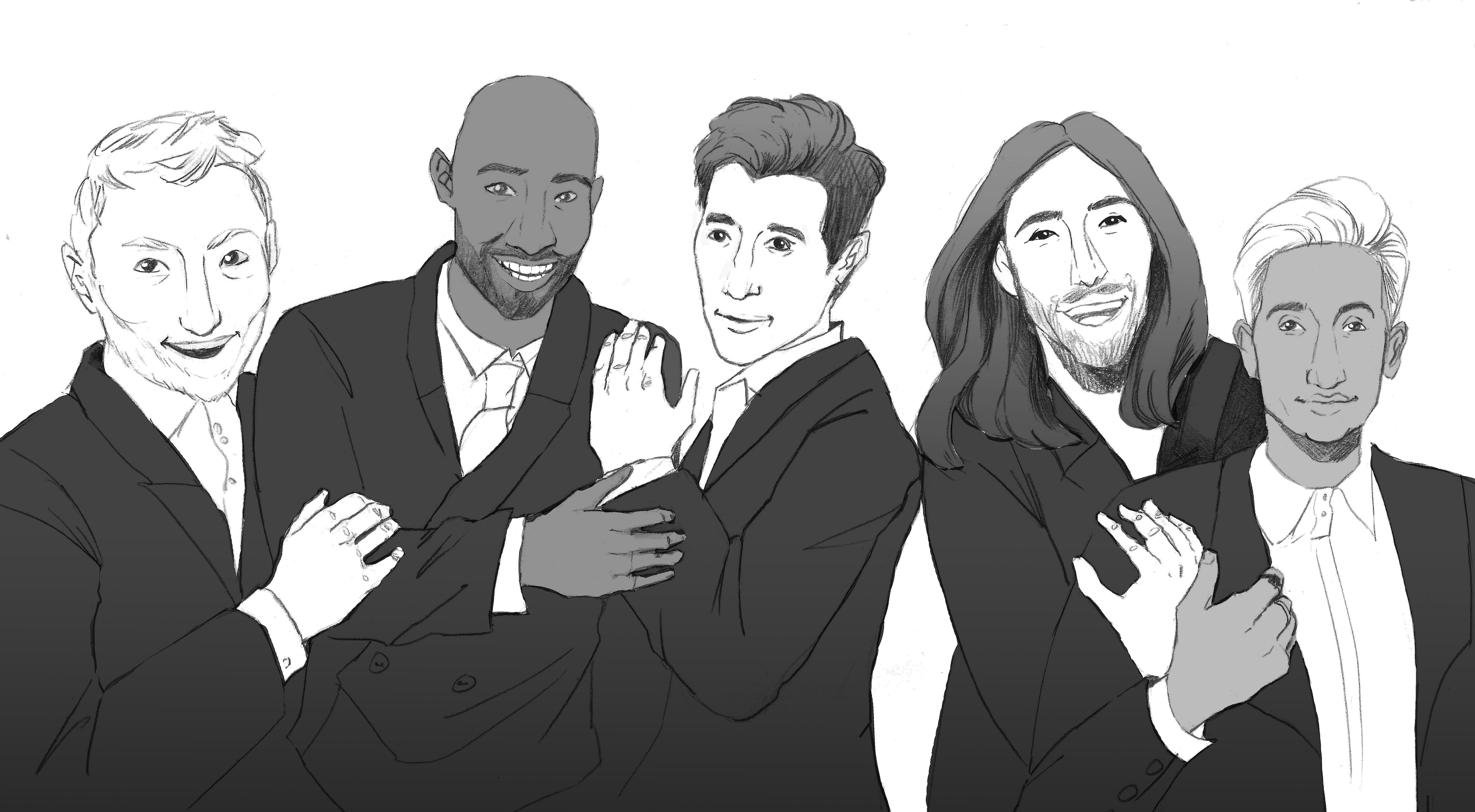On March 15, Netflix released a third season of its feel-good makeover series Queer Eye. Based in Kansas City, the eight new episodes retread familiar ground: Five well-dressed gay men storm into the lives of some beleaguered individual and, through the power of a haircut, group hugs, and pep talks about self-love, all of the person’s problems are solved. While this format compels viewers to laugh along with the Fab Five’s shenanigans and enjoy warm-and-fuzzy moments, the show’s predictably neat endings circumvent frank realities of class and sexuality. Viewers never see any real acknowledgement of why a makeover recipient eats exclusively instant ramen or only wears a broken pair of shoes, nor do they get to see what happens in a person’s life after their Queer Eye episode. The show’s sappiness can be just as infuriating as it is life-affirming.
These shortcomings are made all the more aggravating by the show’s wasted potential. The subjects of each episode all have incredible stories, from dads struggling to get by to a pair of sisters running a barbecue joint. Yet, despite the variety of personal narratives explored, Queer Eye prescribes the same glib solution for everything: Love and take time for yourself. Though this sentiment is not inherently problematic, in relying so heavily on this mantra, the show sweeps larger issues under the rug.
In their makeover for Joey, a divorced father and recovering alcoholic, the Fab Five buys him a whole new wardrobe and refurbishes his home to make him look more like a ‘cool’ dad. For Deborah and Mary Jones, owners of a barbecue restaurant, they pay for Deborah’s dental surgery and set up a deal with a bottling company to mass-produce the Jones’ signature sauce. In both of these episodes, Queer Eye presents the cause of their subjects’ problems as an internal issue, suggesting that they simply needed to look within themselves to find room for personal growth. In the Queer Eye universe, Joey doesn’t wear ragged clothing or live in a rundown RV because of class or financial issues; he simply lacks the self-love needed to improve his life. The Jones sisters failed to bottle their own sauce not because operating a restaurant already demands so much of their time, but because they lacked the confidence to get their product out there.
While it is admirable that Queer Eye promotes self-care and self-love, it refuses to look beyond these platitudes. The show indulges in the fantasy that a visit to the salon and a whole new wardrobe are the only obstacles to happiness. Moreover, most people can’t afford to completely refurbish their homes and businesses. When Tan France, the show’s fashion expert, gives new outfits to Jess, a young lesbian living off of a waitress’ salary, she is visibly ecstatic about her new look. Tan gives her a leather biker vest to try on, asking if she would buy it: “Absolutely. If it was in my price range.” Queer Eye quickly ignores the statement, cutting immediately to a different scene.
And what about the ‘queer’ part of Queer Eye? Despite having an entirely gay main cast, discussion of sexuality, with the notable exception of Jess’ episode, remains limited. The show offers plenty of valuable discussion about body-positivity and resisting gendered beauty norms, but still feels like just another reality TV show marketed more for straight people in the middle and upper class than actual LGBTQ+ people. Instead of showcasing the diversity of queer identities and experiences, Queer Eye is rife with corporate sponsorships and product placements and hardly gives any camera time for expressions of queerness outside of Jonathan’s flamboyance.
If viewers can move beyond Queer Eye’s surface-level solutions, the show provides a pleasant form of entertainment. You can still laugh at its cheesy jokes, but just know that a French tuck and a new haircut won’t help people living below the poverty line.








